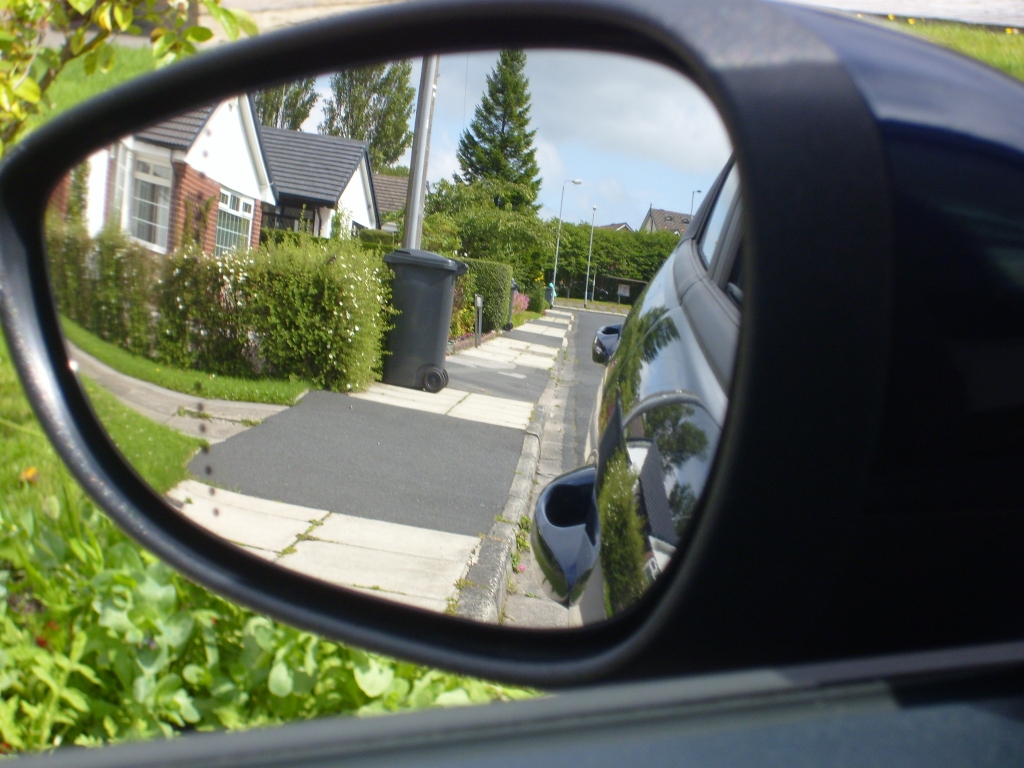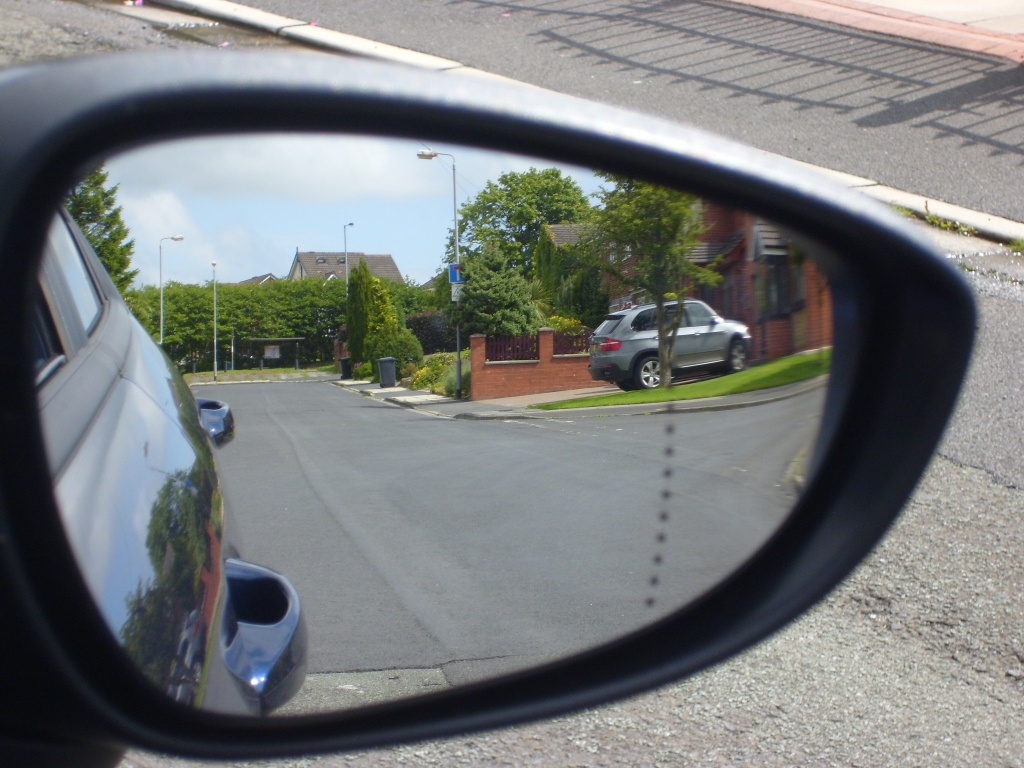HOW SHOULD YOU USE YOUR MIRRORS?
A really easy one to answer.
Use them to make sure that it’s safe to do whatever it is that you are about to do.
Think about that sentence. You are about to do something such as speed up, slow down, turn, overtake or change lanes. Used correctly your mirrors will tell you whether or not it’s safe to do any of those things.
If there is any sideways movement involved in your driving then use your mirrors in pairs according to which direction you plan to move in. So if you are turning or pulling in to the left then you should check your centre mirror and your left mirror and consider if you need to signal before you start to steer. If you are turning right or pulling out to the right then check your centre and right mirror and consider if you need to signal before you start to steer.
SO WHAT ARE YOU CHECKING FOR?
Your mirror check will tell you if it’s safe to complete the manoeuvre and whether or not you might need to give a signal. People are strange and do weird things, especially when they are in a car. I had someone just recently who tried to overtake me when the temporary traffic lights changed at a set of roadworks. My guess is he was either unaware that the roadworks were even there and possibly thought that all the queueing cars were parked up or maybe just thought he was special and deserved to be first. It could have been a serious accident if I hadn’t seen him in my mirrors before moving off when the lights changed.
It could also be someone who legitimately wants to overtake you. What about an ambulance, fire engine or police vehicle on blue lights? They could be overtaking you perfectly within the law and checking your mirrors on a regular basis might, just once, let them get to where they are going a little faster, possibly saving a life or two.
BEFORE CHANGING SPEED
Checking your mirrors before changing speed is vitally important. If you accelerate, how would you know that you weren’t already being overtaken? If you were slowing down then how would you know when to start braking?
It may be that someone behind you is travelling too close. So is it possible that you might start showing your brake lights by braking more gently than usual but much earlier so that the driver behind has a better chance of stopping safely? Being able to do that presupposes that you are checking your mirrors WELL in advance of whatever hazard is ahead of you and that’s an important point with mirrors.
CHECK EARLY!
Get your mirror checks in as early as you can to give yourself more flexibility and make your planning easier. Check them late and you could find that it’s not safe to (for instance) move out to a different lane or move towards the centre line before turning right because someone else is already moving past you and blocking your path.
Don’t spend too much time in the mirrors. I see almost daily that new drivers will stare into their mirrors to the point where their steering will wander or they will miss what is happening in front of them. A fraction of a second is usually long enough to see if there is a problem and if you get a tailgater behind you don’t get sucked in to the idea of watching them too closely even if they are making you nervous because if you do that then what happens in front of you could be a big surprise.
SUMMARY
Use your mirrors to make sure that it’s safe to do whatever it is that you are about to do.
If there is any sideways movement involved in your driving then use your mirrors in pairs according to which direction you plan to move in.
Your mirror check will tell you if it’s safe to complete the manoeuvre and whether or not you might need to give a signal.
BEFORE CHANGING SPEED
Checking your mirrors before changing speed is vitally important.
CHECK EARLY
Get your mirror checks in as early as you can to give yourself more flexibility and make your planning easier.
Don’t spend too much time in the mirrors.
As far as your driving test is concerned, don’t fall for the old chestnut about moving your head more than usual to show the examiner that you are checking your mirrors. Use them exactly the way I’ve detailed above and you’ll be fine. Examiners will see you check your mirrors even if all you do is move your eyeball, it’s their job. Moving your head around unnecessarily will make you look as if you are putting on an act.
ADJUSTING YOUR MIRRORS
Adjusting the mirrors properly means that you don’t have to keep moving your head unnecessarily and also that you’ll know where other vehicles are in relation to your own car. The pictures below give a reasonable idea of what you need to be able to see out of your mirrors when properly adjusted. Other cars may differ significantly.
The main rear view mirror gives you a fairly accurate view of how far away things are because it’s made of flat glass. What that means in practice is that you can use it for judging the distance of vehicles approaching from behind and also to give you a realistic idea of when it’s safe to move back in after, for instance, overtaking. Generally speaking you shouldn’t move back in after passing another vehicle until you can clearly see that vehicle in your centre mirror.
SIDE MIRRORS
The side mirrors are made of curved glass so that they can take in a much wider view of the road to the sides of the car than mirrors made of flat glass would. The drawback of that idea is that other vehicles will appear to be further away than they are in reality. So, if you overtake another car and then pull back in to the left when you see them in your side mirrors, expect the other driver to get really upset!
The dotted line that you can see on the mirror marks off an extra sharply curved outer section of mirror which covers part of the driver’s blindspot. You still have to make that vital check over your shoulder when moving off because it really only covers a very, very small part of the blindspot area.
AND THAT’S IT……………….





